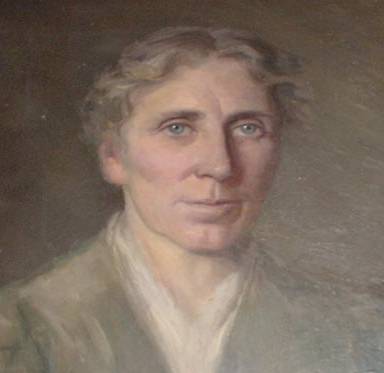A few years ago, Connie Tessier and I were going through some papers at the Hartland Historical Society when we came upon a packet of letters to “My Dear Lass”, signed with the above initials. Eventually we discovered that the initials belonged to one of the most outstanding women of the 19th (and 20th) century. Katherine Isabel Hay or Hayes lived in Hartland from infancy to the age of 12. She first married William Wilberforce Chapin, a missionary in India. They sailed with a cargo of ice in Jan. 1864 to Bombay. He died in India in March of 1865 and in Sept. she set sail alone for home. She then married Congressman Rev. Samuel Barrows.
There is a biography “So much in a Lifetime” by Madeline Stern and a section for her in the book, “We the Women; Career Firsts of the 19th Century America”. Isabel was the first woman to attend the University of Vienna Medical School (she had to learn the language, as well);the first to perform eye surgery in the U.S.; the first woman ophthalmologist and the first woman to work as a stenographer on Capitol Hill – for William Seward. She was a lecturer at Howard University and a pioneer penologist.
Isabel collaborated in writing “The Little Grandmother of the Russian Revolution with Alice Stone Blackwell and wrote a biography, “A Sunny Life”,of her husband. Samuel June Barrows was a pastor in Dorchester, Mass.- and edited “The Christian Register, a Unitarian weekly. In 1895 he was appointed by President Cleveland to represent the U.S. on the International Prison Commission.
Isabel’s father, Dr. Henry Hay was convinced to come to Hartland from Irasburg to set up a medical practice. The family lived in Hartland from 1847 to 1858. Because there were no boys for boys work, and because there were two older girls to help their mother, Isabel became the boy of the family. She did the boys chores and accompanied her father on his medical rounds. She was home schooled. She remembers her first day here, under a plum tree.
Tolstoy said to me this summer when we were visiting him in Russia (she learned Russian also). Whether I shall know myself for myself after death I know not. Nor do I, but I know the exact moment I knew myself for myself in this life. It was in the Fall of 1847, out under the plum tree in the garden. Our new home on the hill was our very own. We lived in it as long as we remained in Hartland and it was disposed of after my father’s death. It stood on a plateau that broke a beautiful hill which was crowned with a grove of beautiful pines. The view from the hill was exquisite. Mt. Ascutney was only 10 miles away and the valley of the Connecticut swept down toward the east. Beyond it lay the hills of New Hampshire, that ungodly state (I don’t make this stuff up. C.Y.M.) as it seemed to me as a child because they allowed liquor to be sold there and the vote was democratic. From that time the two things have seemed to me to go together.
One day while playing in the yard Isabel remembers, “A big man leaning on the fence broke into our fun by saying, ‘What game is that you are playing?’ I explained it to him and he said it was a very nice way to play for he had been watching us, though we had not seen him and, ‘Are you Mrs. Hay’s little children?’ he asked. ‘Run and tell your mother that Henry Ward Beecher would like to see her’. Mr Beecher had lectured the night before in Woodstock and stopped to call on my mother, with whom he had had a correspondence and who had heard him lecture the night before.”

Katherine Isabel Hayes
Reprinted from the Vermont Standard, 2012, “Historically Speaking” by Carol Mowry. Picture added by Brad Hadley from HHS archives.
My great grand father, William Kent Hayes, was her brother.
The following from above is likely not true: Because there were no boys for boys work, and because there were two older girls to help their mother, Isabel became the boy of the family. She did the boys chores and accompanied her father on his medical rounds. She was home schooled. She remembers her first day here, under a plum tree.
Henry Hay, her father, later changed the family name to Hayes.